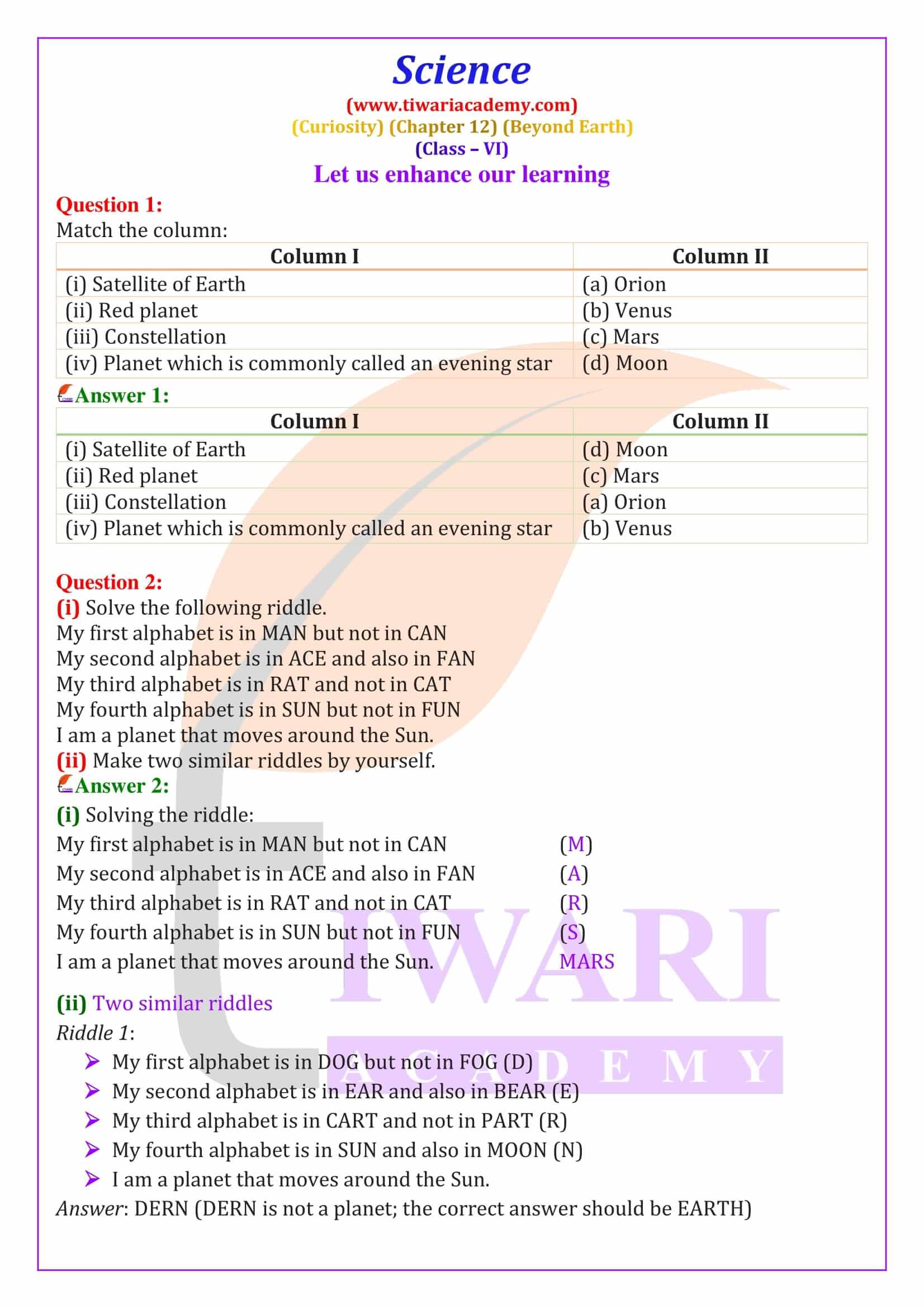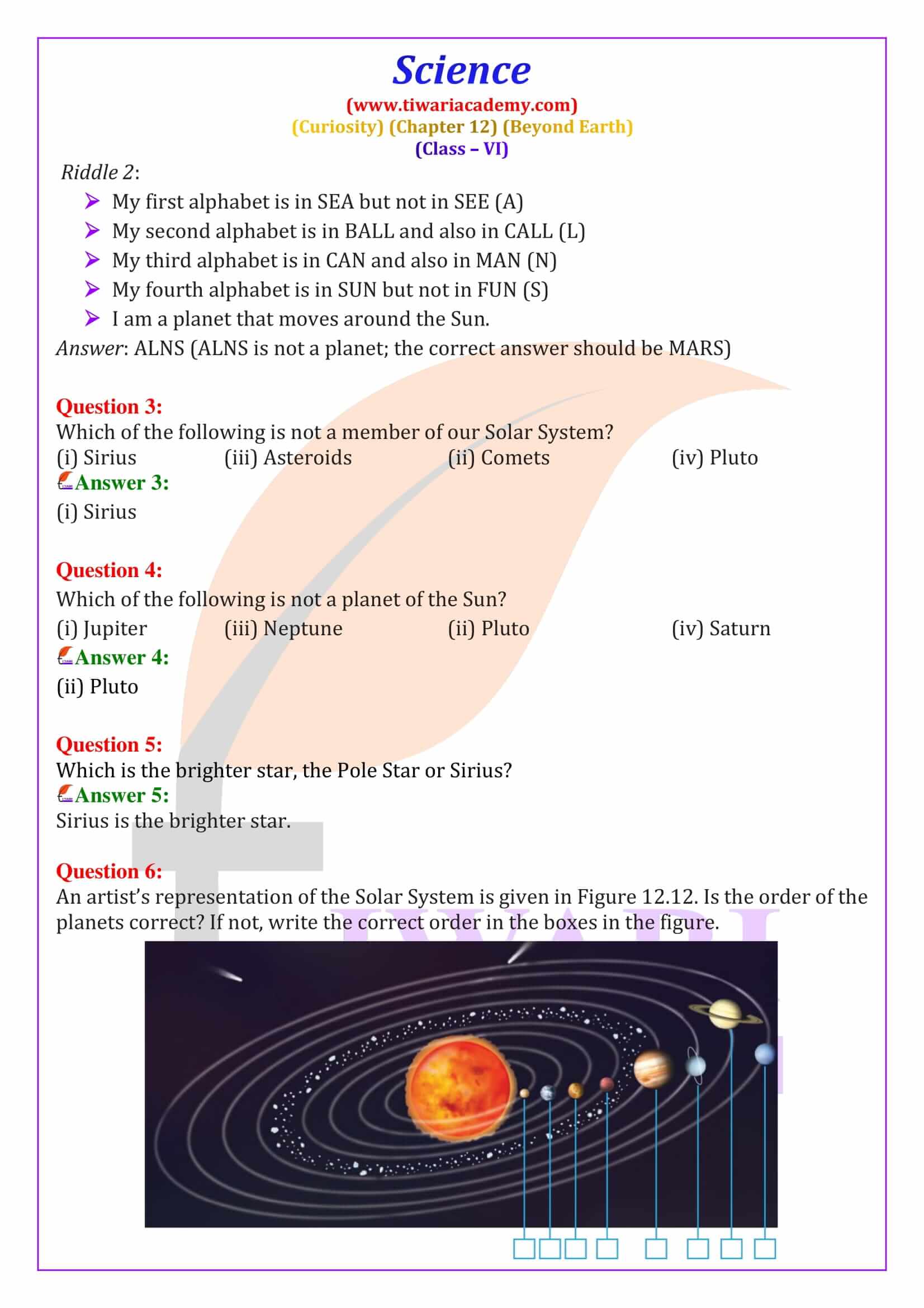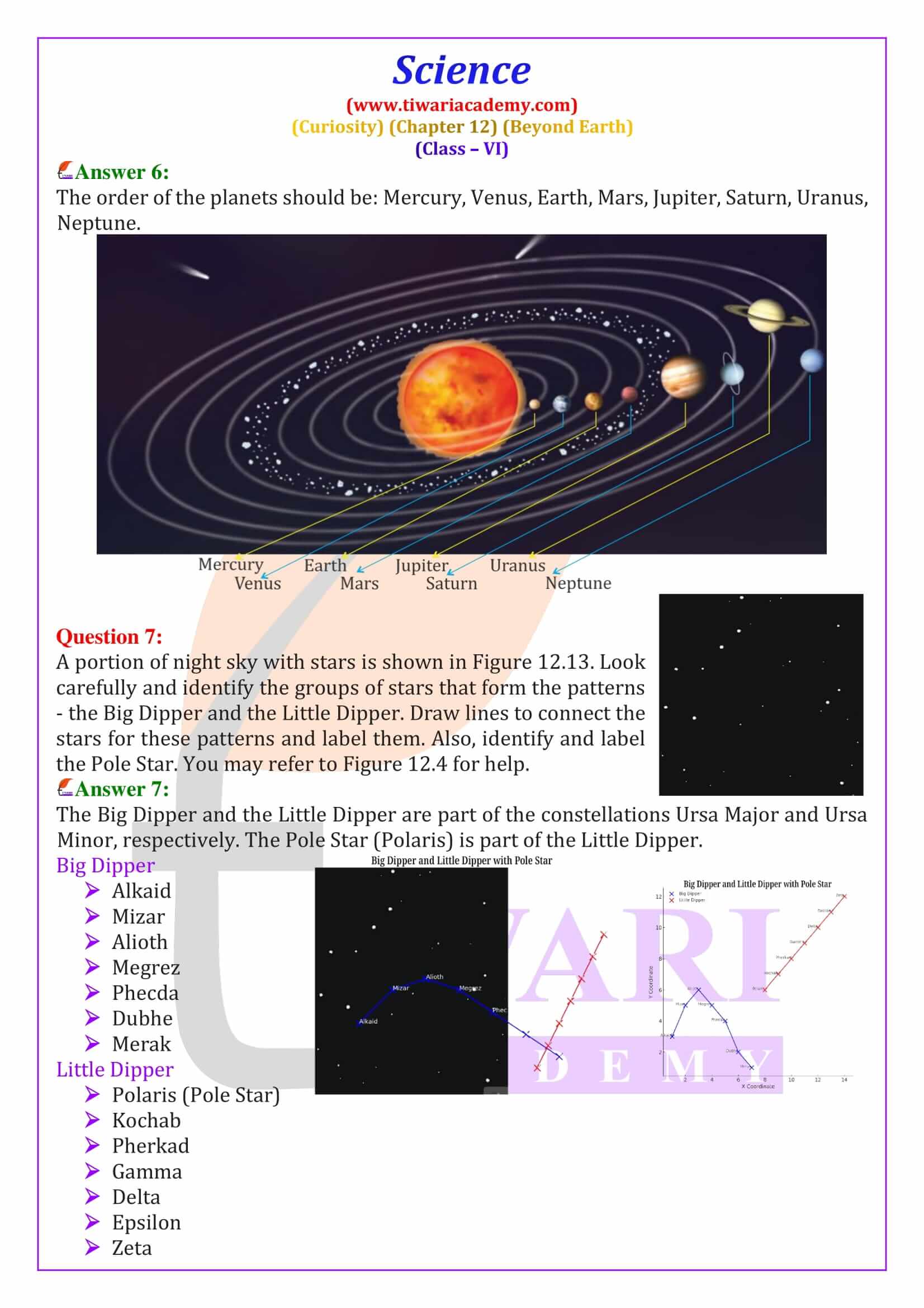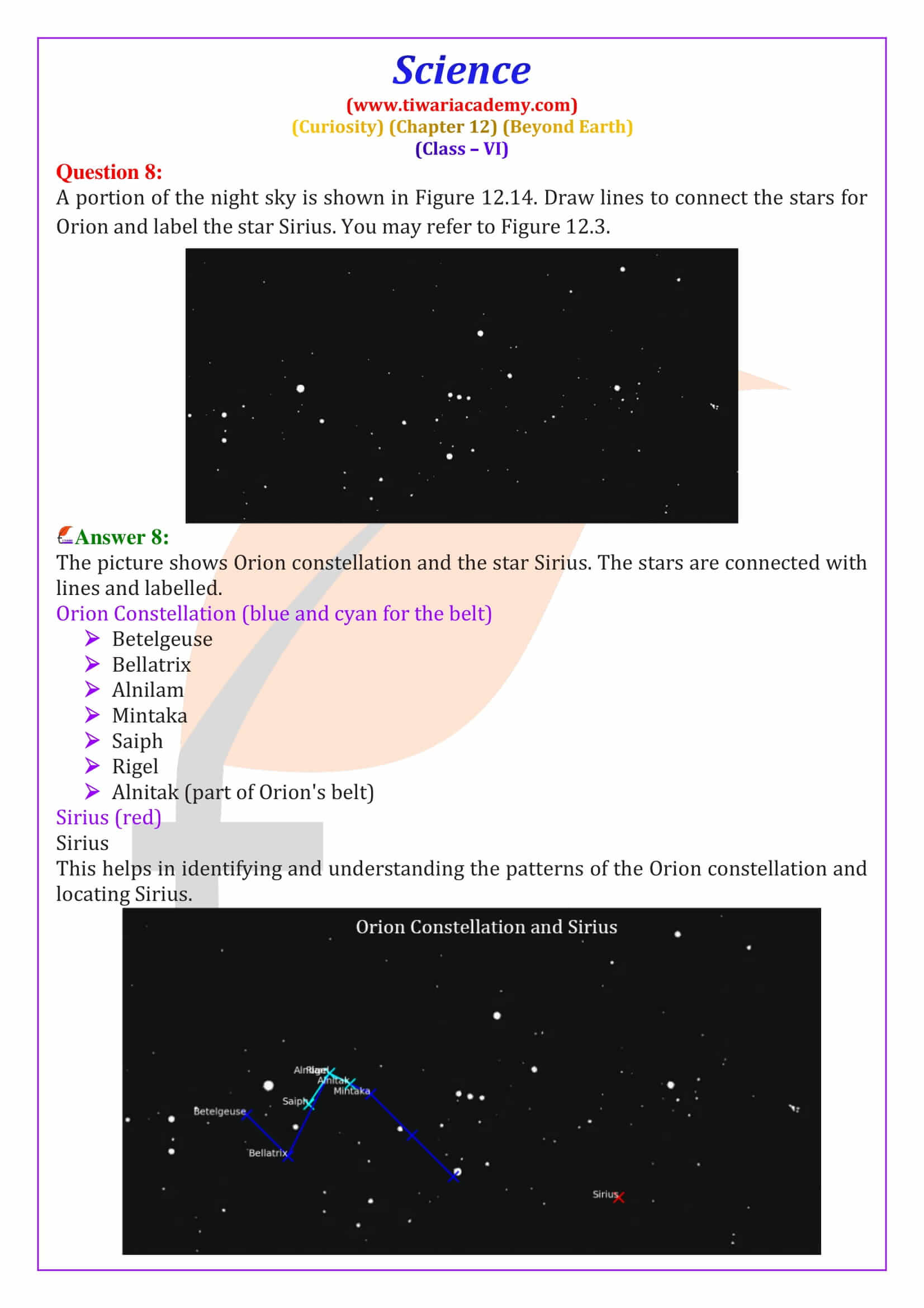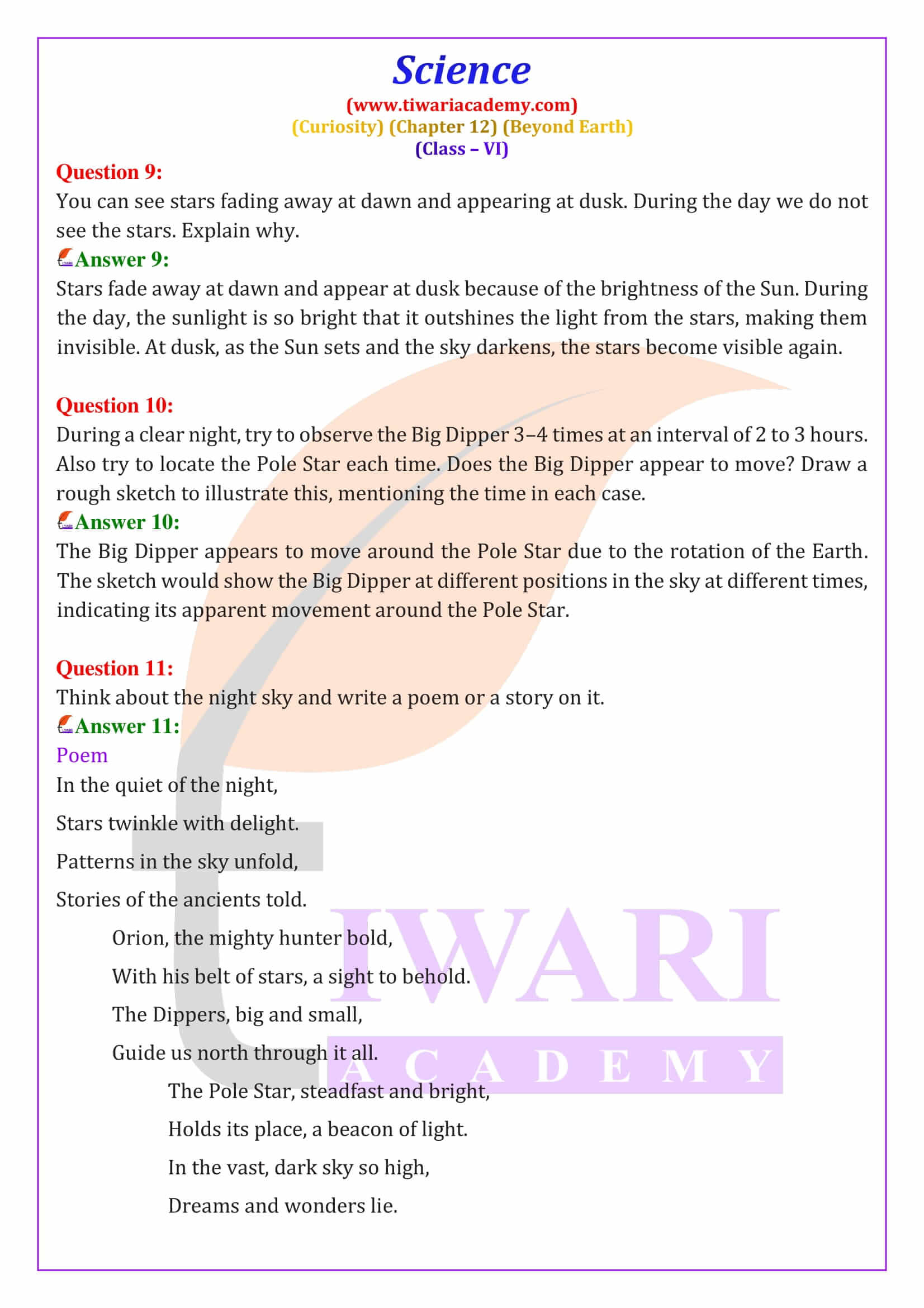NCERT Solutions for Class 6 Science Curiosity Chapter 12 Beyond Earth updated for academic session 2025-26 based on new addition textbooks. The question answers and solutions of 6th science are useful for all boards like CBSE, MP board, UP board and other state boards.
Class 6 Science Curiosity Chapter 12 Beyond Earth
The Wonders of the Night Sky
In the beautiful region of Nubra in Ladakh, siblings Yangdol and Dorjay enjoy the clear, starry night sky free from light pollution. They are fascinated by the stars and often hear stories from their elders about how stars guided ancient travelers. They enjoy drawing patterns among the stars, creating familiar shapes. This activity encourages us to look at the night sky and imagine our own patterns, connecting the stars like dots in a drawing. Observing stars can be both a fun and educational experience, inspiring awe and curiosity about the universe.
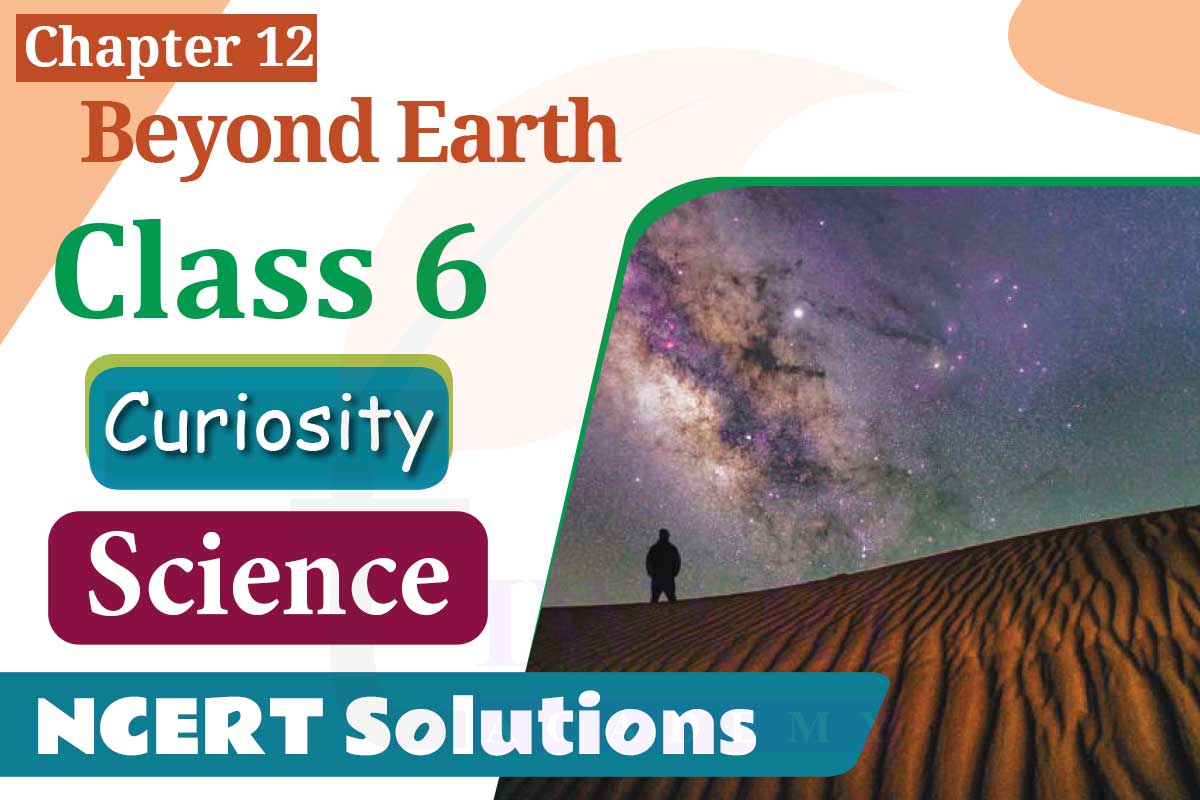
Understanding Stars and Constellations
Stars are luminous objects in the night sky that shine with their own light. Some stars form recognizable patterns known as constellations. These patterns were identified by ancient cultures and used for navigation. Constellations are not only fun to identify but also served practical purposes in ancient times. They helped sailors and travelers find their way before modern navigation tools were developed. Today, 88 official constellations divide the sky, providing a way to identify regions and specific stars, such as Orion, Canis Major, and Taurus.
Navigating the Night Sky
Constellations like the Big Dipper and the Little Dipper are easily recognizable and can help locate the North Star, Polaris. The Big Dipper is part of Ursa Major, and the Little Dipper is part of Ursa Minor. The North Star remains stationary in the night sky, making it a reliable point of reference for navigation. Different cultures have their own stories and names for these constellations, adding cultural richness to our understanding of the night sky. Observing these patterns helps us appreciate the cultural significance and practical uses of stars.
Preparing for Night Sky Watching
To observe the night sky effectively, choose a dark, open area away from artificial lights and tall buildings. A clear, moonless night provides the best visibility. Using a sky map or a mobile app can help identify constellations and stars. It’s important to let your eyes adjust to the darkness for about half an hour before observing. Activities like finding the Big Dipper, locating the Pole Star, and identifying constellations such as Orion can enhance the experience. Preparing well ensures a successful and enjoyable night sky watching session.
Exploring Our Solar System
The Sun, our closest star, is a massive ball of hot gases providing energy to the Earth. It is the center of our solar system, which includes eight planets: Mercury, Venus, Earth, Mars, Jupiter, Saturn, Uranus, and Neptune. Each planet has unique characteristics, such as Venus being the brightest object after the Sun and the Moon, and Mars appearing red due to its soil. The outer planets are mostly gaseous and have rings. Dwarf planets like Pluto also orbit the Sun. Understanding our solar system helps us comprehend the vastness and diversity of space.
Beyond the Solar System
The Milky Way Galaxy, visible as a faint band of light in the night sky, contains our solar system. It is one of billions of galaxies in the universe. Scientists study galaxies and exoplanets (planets outside our solar system) to understand the cosmos better. While we haven’t found evidence of life beyond Earth, the search continues. Observing celestial objects with telescopes and participating in night sky watching events can deepen our knowledge. The universe is vast and full of mysteries, waiting for us to explore and discover.
